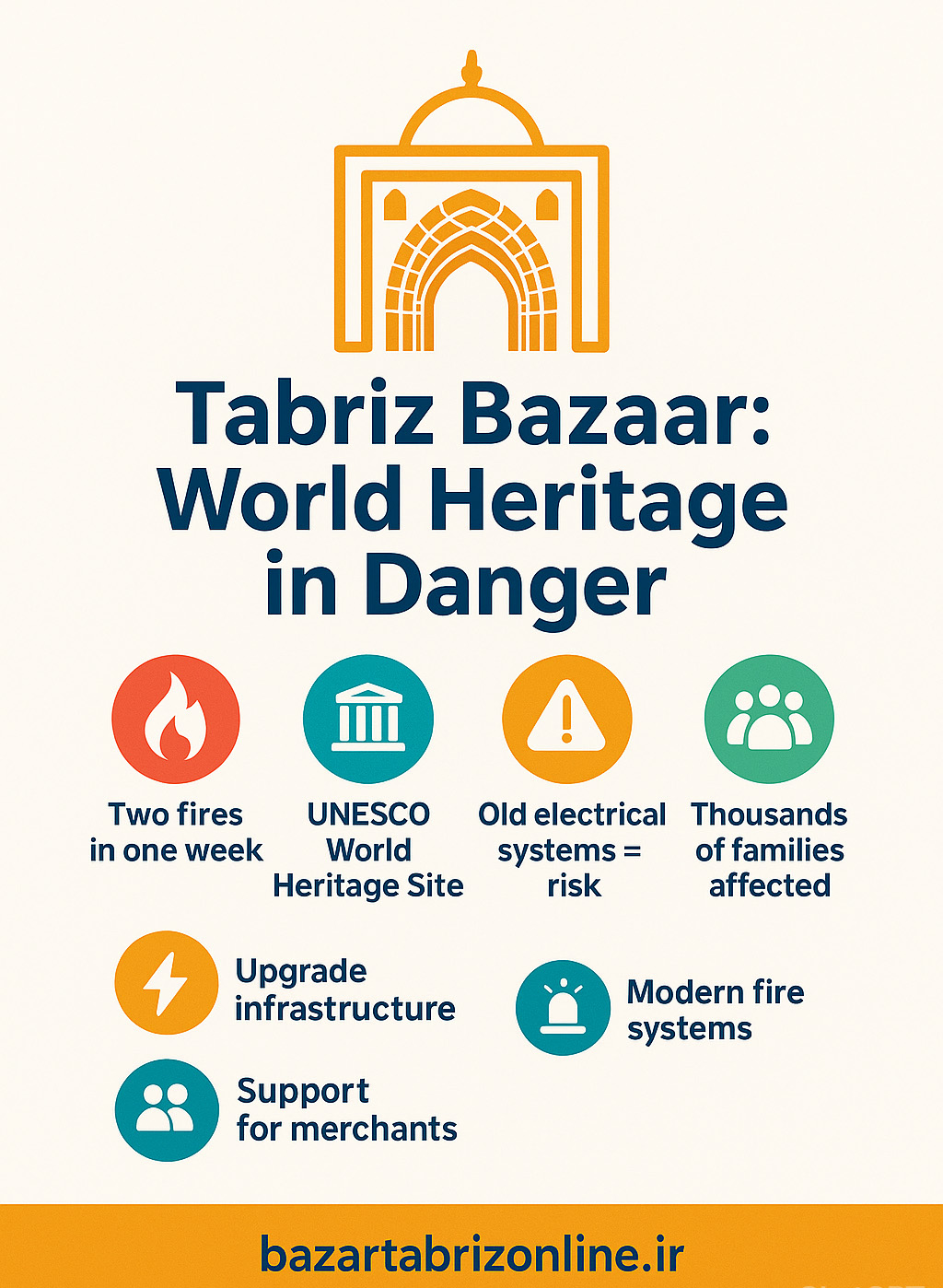



.jpg)
The historic Tabriz Bazaar, the world’s largest covered market and a UNESCO World Heritage Site, has once again been threatened by fire. In late August, two separate blazes occurred within one week: the first in the Gorjilar–Amir section, and the second in the Sadeghieh Bazaar, where seven shops were destroyed. Officials claimed the fires were “quickly contained,” yet their recurrence highlights deeper structural risks
For centuries, Tabriz Bazaar has been more than a trading center. Since the days of the Silk Road, it has served as the city’s cultural and economic heart. Marco Polo recorded its vitality, and UNESCO recognized it as an exceptional example of traditional bazaar architecture. Each fire therefore represents not only local damage but also an international cultural loss
Studies from 2009–2019 warned of outdated electrical systems, inadequate fire safety equipment, lack of night patrols, and weak oversight. These warnings were largely neglected. The 2019 fire alone destroyed over 100 shops, injured dozens, and caused damages exceeding 200 billion rials. Many merchants, lacking sufficient insurance, never recovered their livelihoods
A lasting solution requires more than post-crisis statements. What is needed is a **comprehensive action plan**: renovation of electrical infrastructure, installation of modern fire detection and suppression systems, regular safety training, financial support mechanisms for shopkeepers, and organized night patrols. Strong financial and legal backing from government and parliament is essential
Experiences in Istanbul and Cairo show that historic markets can be protected through infrastructure upgrades, merchant training, and state investment
Tabriz Bazaar is not merely a local asset; it is part of Iran’s national identity and humanity’s shared heritage. Two fires in one week are a stark warning: protecting it means protecting history itself
